In this interview, we sit down with Nan Zhou, co-founder of No Code Map App, to discuss how she and her team transformed a trip-planning mapinterfac ...
Ken Hubbell on Redefining EdTech with Artificial Intelligence
Written by: Esther Strauss
Esther is a business strategist with over 20 years of experience as an entrepreneur, executive, educator, and management advisor.
Published on April 2, 2024
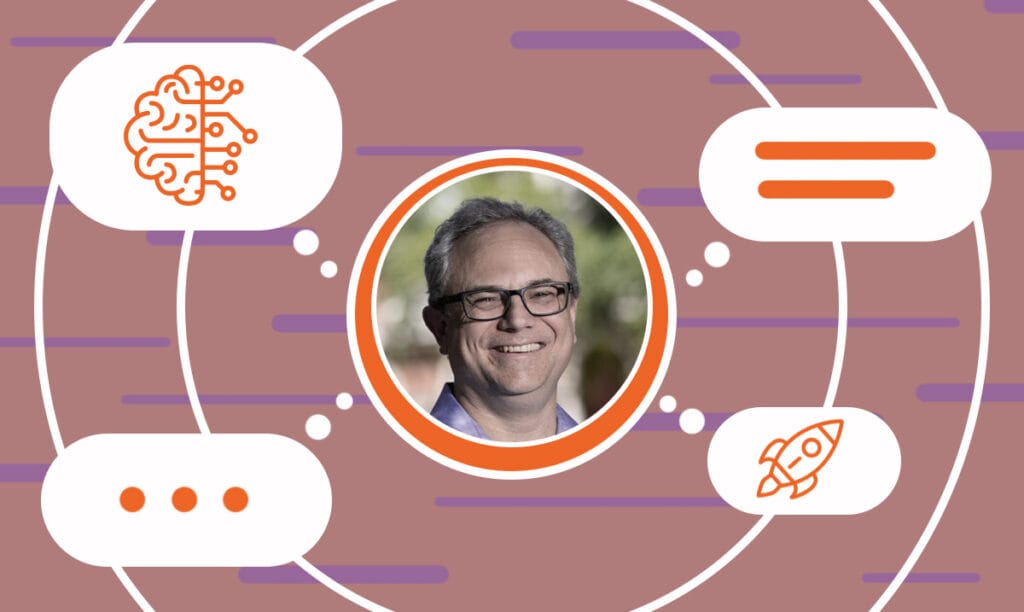
In this interview with Ken Hubbell, CEO and chief product officer at Soffos.ai, we delve into the innovative world of AI-driven learning and knowledge management. Ken shares his journey from developing performance support tools with Amazon’s Alexa to co-founding Soffos.ai with Nikolas Kairinos.
Discover how their passion for education and expertise in coding shaped Soffos.ai’s trajectory, especially amidst the challenges of the K–12 educational market and the dramatic shift brought by COVID-19. Learn about Soffos.ai’s unique platform, which serves a diverse audience — from educators to web developers — and their strategy to make edtech more accessible and effective.
Ken also touches on the importance of data privacy, the evolution of AI in education, and the exciting future developments at Soffos.ai.
Inspiration and Impact
SBS – What inspired the creation of Soffos.ai, and how do you see it impacting the future of learning and knowledge management?
Ken – In 2018, my co-founder, Nikolas Kairinos, and I met online. I had been doing development work with Amazon’s Alexa at the time. Instead of creating games, trivia tests, and things like that, I saw it as a perfect opportunity to do hands-free performance support tools. I worked with a couple of companies. I did one project with Zoox, an autonomous car company, and another with a veterinary hospital practice called VetBloom. Both of those roles involved conversational AI that would allow you to get step-by-step procedures if your hands are dirty or occupied.
When Nick and I met, he started a company focused on natural language processing and creating conversational AI. We thought it was great and started going even further, realizing we both have a strong passion for education. I’ve been in corporate learning and education for more years than I could count, and Nick also had a passion for it. We also discovered we had very similar backgrounds in coding as kids and getting involved in very nerdy and geeky things as we grew up. Nick had started a few businesses before, and I had been involved in a number of corporate organizations and had run my own company for a little while.
We found this nice synergy and balance and wanted to build something with this technology to impact students. We were focused on K–12 then and figured it would bleed into university or college level. We wanted to create an educational app that would make it easy for kids to study for tests and prepare for school. We had this great vision, and we called the app Test Me. It was a great little app, but we found out that selling into the public education market (or at least the K–12 market) is very hard if you’re not a big publishing company like Scholastic, Pearson, or any of those. Not only is getting traction in that industry very hard, but getting venture capital to back an educational product is difficult.
Keep in mind that this was all pre-COVID, so people were used to just going to school and not doing it on their phones. Even though adults were using apps like these (e.g., Duolingo) to learn languages and other stuff, kids were not. Then COVID hit, and a couple of things happened. One, it became obvious that there was an opportunity for edtech. Two, while the VCs and customers weren’t interested in buying the educational app we were building, they were interested in licensing the building blocks we had been putting together for conversational AI. So, we did a big pivot in 2021 and decided to take what we’ve done and make it a platform as a service. That’s how the Soffos.ai product that we have now came to be.
We were able to start with several modules focused on education because we’d already built them for the app. We also recognize the fact that, while people wanted to develop their own edtech products with our SDK and API modules, to be able to do that, we needed to demonstrate to them what these things actually do. For that reason, we created a playground environment in the platform for people to try out the different APIs. We discovered that all that some people wanted to do with the platform was do quick one-off or one-shot utility-type things to summarize or simplify something or create a micro lesson or a set of questions and answers. They were using it as a utility platform to be able to do tasks and not build apps of their own.
The cool thing is that this platform suddenly hit three audiences, even though we needed to narrow-focus and laser-focus our marketing approach and our approach on the platform. Our audiences are teachers and administrators in the educational world, web developers, people who want to add functionality to their websites or e-learning sites, and then full-blown edtech developers who want to build complex applications. We have an SDK, a set of APIs, and a platform for general use.
It took us a little while to get to where we are. We went through a couple of iterations of this, but now we’re at a point where we are launching our go-to-market strategy. We’re also at a point where we burned through our initial angel investing, and now we’re pursuing and raising our seed round of funding. Hopefully, if the stars align like they look right now, we will take that and scale the operation and the platform to take on the next set of advanced technologies that we already have in our roadmap. We just are taking time to execute.
SBS – Do you think your coding experience helps you to understand the needs of the platform?
Ken – Yeah. Especially with the SDK and the APIs. Coming from a background in education and being an edtech developer, I knew what I needed to put into the SDK and the API to make it both easy to use and useful. Sometimes, that’s an interesting combination because you can make things easy to use, but then you take out the usefulness of it and vice versa. We also made sure that we reached out to other developers, and we’ve secured some strategic partners that have helped provide that feedback loop to ensure that the product is meeting the needs of what they have to build applications.
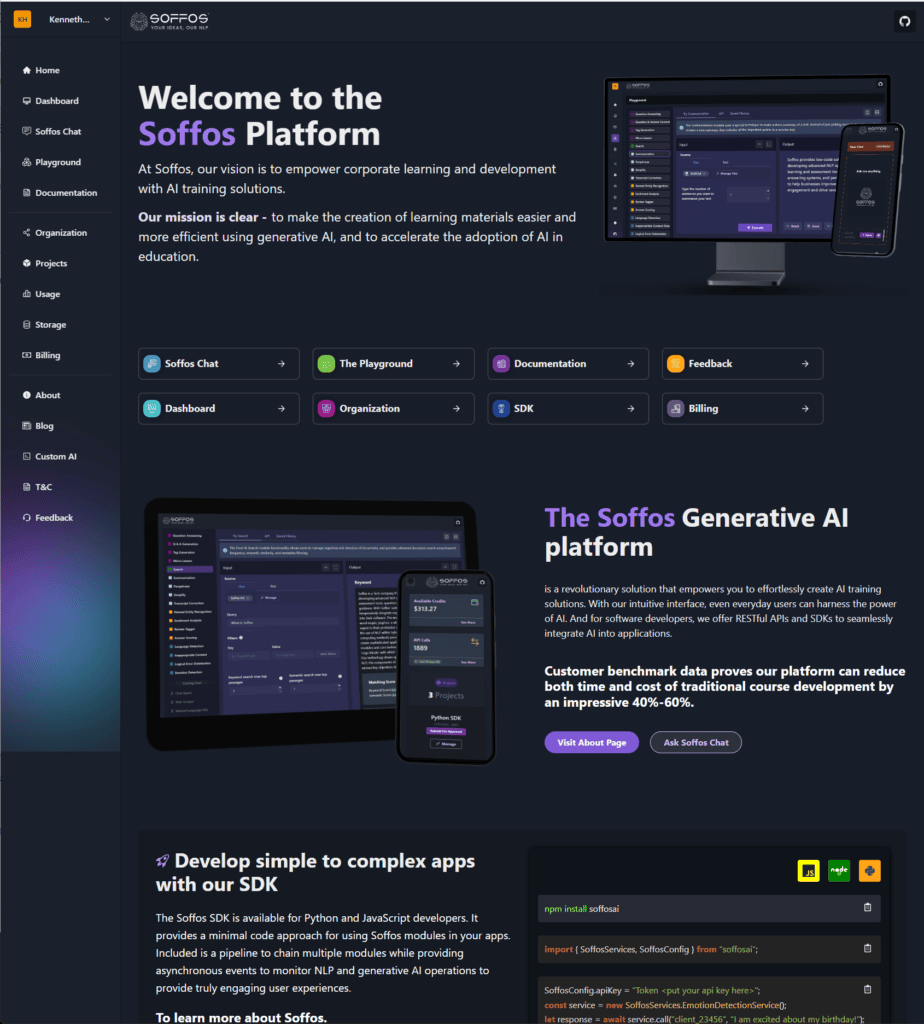
Differentiation in Technology and Services
SBS – How does Soffos.ai differentiate its technology and services from other AI-based learning platforms, aside from catering to three types of audiences?
Ken – There are several things that make our platform different. First, we are agnostic to the large language models that support it. We give users the ability to dynamically change the learning language and the large language models they use to accomplish various tasks and functionalities.
We also provide a mechanism that, should any of the large language models fail due to service overload or anything else, we automatically failover to another large learning language model so there’s no functionality gap. This is vital for real-time systems with a continuous connection and the ability to process natural language, especially in training and learning. If you’re in the middle of a lot of taking a course, and part of the course is interactive from a conversational standpoint, and all of a sudden, the conversation stops because there’s an error on the system, that kills it right there. So, we put steps in to make sure that didn’t happen.
Our platform can also be set inside someone’s firewall. It means that, without any doubt, you can protect the IP of the organization that is using the platform. That also means that those companies that want to use their own documentation, materials, and course content can be secure to use within their firewall. While we use various LLMs inside the firewall, some of which are foundational open source, those open-source ones are hosted wherever the platform is put from a company standpoint. We only use those for conversation or writing, both the input and the output. The content that goes into it is narrowed down to the specific organizational documents and subject matter that’s being used. It allows us to provide accuracy, relevancy, and traceability back to the source. That’s a powerful thing for most companies. They need to have that audit trail to figure that out.
Success Stories
SBS – Can you share some success stories or case studies where Soffos.ai has significantly impacted an organization’s learning efficiency or knowledge retention?
Ken – One of the companies we did an early project for is a learning management system company called Flagship LMS. They came to us because one of the challenges with learning management systems is that you have to know SQL and a database language to do effective reporting on the student base or the employees. However, the problem is that you get teachers and facilitators who are great at teaching, but they don’t know SQL. In reality, they shouldn’t have to know SQL to effectively use the platform for learning management. With the help of one of our engineers and the engineering team at Flagship, we built an SQL plugin that allows for a natural language approach to requesting a report. Instead of having to figure out the SQL commands to get all of the records, the request can be “Give me the records for this class from X date to Y date,” and it generates a report. The great this about it is that the person doing the query doesn’t have to know SQL. That was an early success.
We have some other applications that we’re working on with companies. Of course, the problem with an app and having a development platform is that it may take the app development companies six months to build something. Right now, a couple of companies are using our platform to create educational apps. I can’t go into details, but there’s one working on a K–12 app and another working on an app for corporate training and materials.
The variety of different things that people want to do with the platform has been really exciting. Because RSDK allows you to construct fairly complex pipelines of tasks, you can have some amazing productivity uses and integrate AI into your solution. One of our strategic partners, Navigant Learning from Charlotte, North Carolina, did a benchmark testing exercise with our platform, and the goal was to figure out how much they could reduce the time, effort, and cost by using the Soffos platform to help accelerate the development of training programs. Without even trying very hard, we were able to help them save 40% of the time and cost of generating course content.
Based on some of the projected numbers that we got out of that, we believe that with a little bit more effort, we could get almost a 61% reduction in time and cost from a productivity standpoint. Also, because we can set up pipelines using our pipeline tool, most of that can be automated with the addition and allow for human-in-the-loop checkpoints along the way.
However, it’s not just the time it takes to develop the platform from the standpoint of FTE resource usage; it’s the speed at which they can now get the course material out to people who need it. If you can shave off 40%, that means that instead of something taking five days, it takes three. If you can shave off 60%, you’ll complete a course in two days instead of five. Or a course that used to take weeks or months is now being done in a week. This time will get shorter, and the shorter it is, the more effective it will be.
Again, I’ve been in corporate training and learning for a long time, and the challenge always was to get it done faster and enhance the training with some mechanism that allows people to be more engaged and immersed in it. You’re getting feedback on your answer based upon an actual analysis of what you did, or if you can create an interactive narrative, a branching scenario where the results of it are dynamic and the decisions that you’re making early on affect the long-term experience that you get in that course, that’s significant.
It used to take a lot of time to write because you had to predefine the narrative. Now, because it can be dynamic, it doesn’t have to take as long to create the content, and I can get it out faster because I’ve already saved time for my resources, the certification, or the compliance-type courses. Those resources can now be reapplied or applied differently to create more complex and engaging courses that may involve virtual reality, augmented reality, and AI. Suddenly, your corporate training team can do much more engaging learning than before because they actually have the time. It’s not about replacing people’s jobs or replacing the effort. It’s redirecting the effort into something more meaningful.
Content Accuracy and Relevance
SBS – How does Soffos.ai ensure the accuracy and relevancy of the content it delivers to users?
Ken – One of the things we’ve been doing is retrieval augmented generation, and we started doing it back in 2018 before it was cool (and before it was even called that way). Retrieval augmented generation allows you to use your documents, and that’s the way to maintain accuracy. The general large language models do great from the conversational aspect. Some things are pretty much standard bodies of knowledge that you shouldn’t have to recreate — how to use a wrench, a multimeter, a scalpel, or whatever the generic tool is. Those are pretty common things, but you sometimes need to know how to do something in a particular way (how to use a scalpel to do a specific type of surgery or use a multimeter to test some company’s product).
Whereas I don’t have to teach the multimedia part, I want to ensure that the product-specific information is 100% accurate to the company or product. I can supply a document or expert material on the subject matter. It could be audio files, video, or whatever. I can supply that information with the language model to get the response based on whatever I’m asking that is specific and relevant to that particular product. If that product is in the United States, then a certain set of things go with it. If that product is in Europe, there may be another set of things, like the metrics (standard or Imperial). So, you can make it specific to a culture, location, product, or service through the supporting documents. Now, I can customize the results and ensure their accuracy because I can provide citations back to the user from where I got the information.
Data Privacy and Security
SBS – What is your approach to data privacy and security, especially concerning the sensitive information in a learning environment?
Ken – Nothing goes out of our system. We don’t use any information provided to us to retrain a model. In some other public models, the information that people feed into the system gets used in combination with the response they get out to retrain or continue to train the model, meaning that their information gets incorporated into the large language model. That’s why you get situations where someone’s serial code, resume, or personal information somehow gets out. With us, that never happens. We have a “walled garden” that says nothing’s going out. Your content stays yours. Whether you’re a corporation, a university, a public school, or an individual, we treat everybody’s data the same, and we don’t let it out.
Evolution of AI in Education
SBS – How do you see the role of AI in education evolving in the next 5–10 years, and how is Soffos.ai preparing for these changes?
Ken – Last year, I wrote a book called There is AI in Team (you can get it on Amazon). It has a whole section on education.
Several things are happening with AI right now, and people don’t fully see the potential of this technology. There is a potential for evil. I will flat-out tell you that there is, but it is not because of the technology; it’s because of the people who want to use it for bad things. A match can either start a fire so you can cook food or burn your house down; it depends on how it’s used. We must provide safeguards for that and be conscious that there are bad people in the world. That’s just the way it is. However, you should not limit or restrict the positive impact that AI can have.
I’ll give you an example. Little kids like to ask questions, and sometimes, they will ask the same question 20 times in a row until they get the answer they think they are looking for. The great thing about AI is that it never gets tired, frustrated, or exasperated because you’ve asked it the same thing 20 different times. Moreover, depending on how that question is asked, it may give you a different or slightly different answer each time. You just need to guide it.
One of the things that will start happening in our educational process is that we will see a transformation of what we consider education. We’ve done a very rote industrial model of education for 150-odd years now. While that was great when we were manufacturing and putting people onto assembly lines or teaching them to read invoices and things like that, it’s not great when it comes to creative activities or activities where you’re doing discovery operations and similar stuff. That, of course, is where human beings stand out amongst the machines.
There are foundational things that everyone needs to know, like how to read, write, and do basic math. But when it comes to the more esoteric, creative, and discovery-based things, it’s more important to know how to ask the right questions. I’ve been speaking and presenting on how to ask the right question for the better part of 15–20 years before the advent of AI. It was more about the fact that we needed to change how we teach people how to learn. We have a great system to teach people how to memorize, but we didn’t do a great job teaching people how to learn.
Ironically, if you go back in time to the days of Socrates, he taught by asking questions. People would ask him questions. He would ask questions, and through this conversation that would go back and forth, answers would be discovered, or they would get quests to do something to figure it out. We’re going to have the same thing happen now. That, to me, is very exciting because it’s a much more exploratory and applied approach to learning where you’re doing things. In the process of doing it, you’re having this ongoing dialogue with this artificial entity.
That artificial entity is not even replacing the teachers because you still need to have that interaction, and there are certain skill-based things where it’s more practical to have a human touch. Human beings are very interesting from a biological and physical standpoint because we can adapt very quickly to situations without having to go through extensive training. Having a machine that can do that level of adaptation quickly as a human being does, with all of the articulation required right now, is just not possible. We’re getting there, and some machines do pretty amazing things, but they’re not at the degree to be a teacher of a five-year-old or a ten-year-old.
The other thing happening in education right now is mass personalization. If I’m trying to learn something and my picture of the world, my demographics, my region, whatever the situation is, constrains my context for what I would be able to understand something, and you present a problem to me that’s in a context that I don’t understand, I may not be able to answer that question because I don’t have the proper framework to base my answer on. Until now, to have a teacher be able to create a custom test, assessment, or a set of practices for every single student in the classroom was inordinately time-consuming and not feasible given the constraints of how much they have to get done on a given day. But imagine if I can create one example, and then, based on the demographic or the information I have about each student, I can have AI rewrite that same exercise, but in a context they understand.
Future Growth and Innovation
SBS – Looking forward, what are the key areas of innovation or growth for Soffos.ai, and how do you plan to address emerging trends or challenges in AI and education?
Ken – Years ago, I had the opportunity to work on the first version of the metaverse. There was a product called Second Life, and the company I was working for created a competing product for Second Life. It was ahead of its time to the point where it was not marketable, but it led me on a path that incorporated a lot of different things. So, when I think about AI and conversational experiences, I think of being in the metaverse.
If I’m in an empty room, that’s not a great experience. But if I’m in a room with many characters or personas, and there are some of them real and some artificially driven, I can have an experience with them, and that’s an amazing thing, especially if I’m learning something. So, if I’m learning a soft skill like sales techniques or how to host a meeting, or I need to watch someone do something to learn how to do it myself, those experiences are phenomenal. That’s one of the areas we will be adding value to because our platform lends itself to being incorporated into platforms like them that are in the metaverse.
The other thing is the amount of data now available and becoming available regularly that anyone can tap into. It’s huge. How do you now take that information, process it, and add instructional value if you don’t already know it? I need a system that knows whether I know that and then delivers information when needed, not six months in advance or three months late. That’s where I see our platform and this technology heading — the ability to augment us as human beings, not replace us, but to make us better than we are now.
That opportunity is huge, and I keep telling people we’re only so far into this transformation that’s taking place. If you look at where we’ll be in 5–10 years, just based on the speed things have happened in the last year and a half, it will amaze you. Things are transforming at a speed that was never even comprehended. If someone told me that they have a forecast for where things will be 10 years from now, I’d say, “That is great that you have a forecast. Just be prepared to change that forecast every six months.”
Also, we don’t even know what we don’t know yet. We are in a time where we will be discovering things faster than we have ever discovered and at a volume of discovery we’ve never seen before. So, anyone who thinks there are no opportunities left and that we’re all going to lose our jobs is wrong. Yes, we may change our jobs. A year and a half ago, I was heading up strategy and innovation for the learning development arm of Wells Fargo Bank. Now, I head up an AI company. If you told me that would happen, I’d have said it wasn’t possible. I didn’t even see this on the horizon. But that’s where I am today, and I’m here today because this is a transformational time, and it’s a great time to be in it.
Subscribe to Our Newsletter
and gain insider access to cutting-edge business insights and trends.
Featured Resources
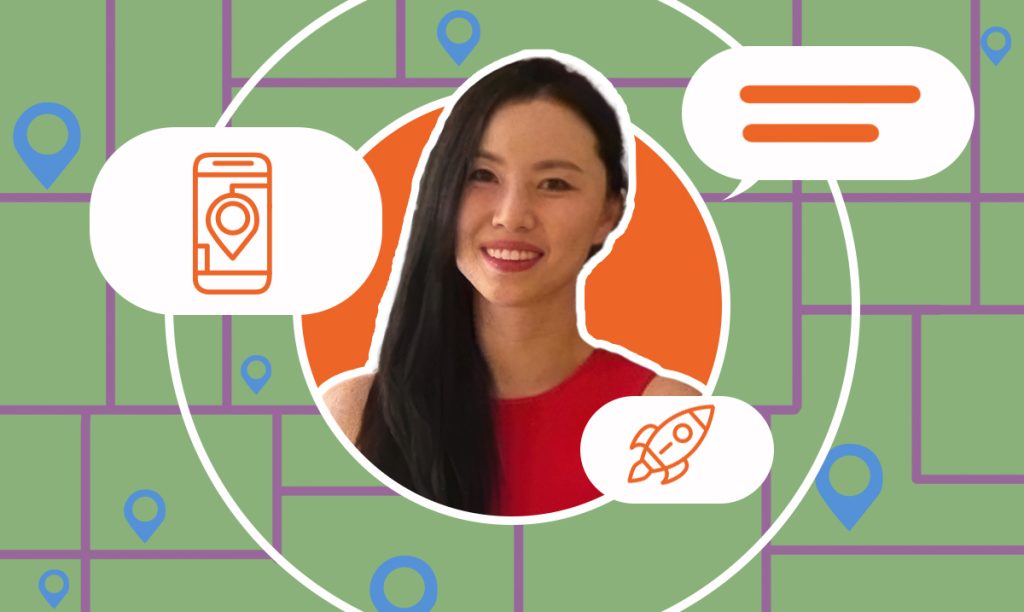
How No Code Map App Delivers Custom Maps Without Coding
Published on April 3, 2025
Read Now
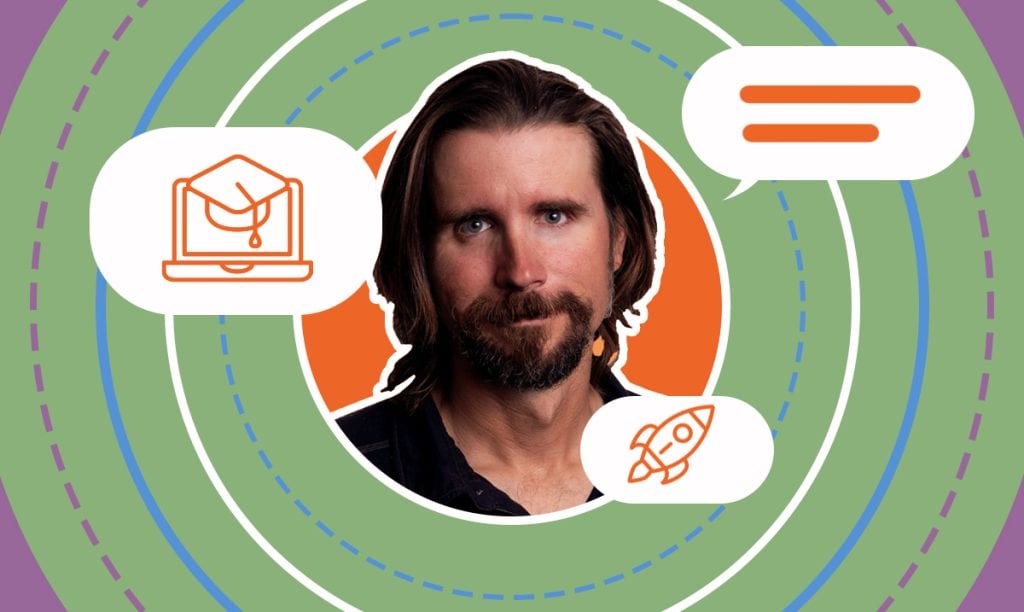
How LifterLMS Simplifies Online Course Creation for Educators
Published on February 27, 2025
Online education is booming, but creating and scaling a successful course can be challenging without the right tools. That’s where LifterLMS comes ...
Read Now
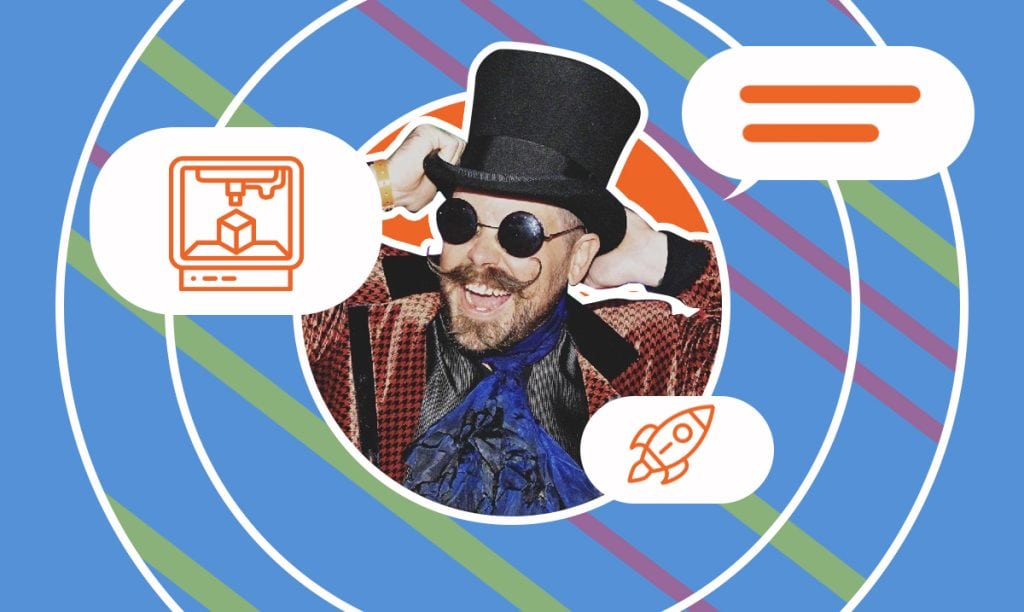
How Jinxbot Leads Zero-Waste 3D Printing
Published on January 14, 2025
Jason Reynolds, founder of Jinxbot and co-founder of the zero-waste nonprofit PrintCycle, is leading the charge. With a passion for innovation anden ...
Read Now
Comments